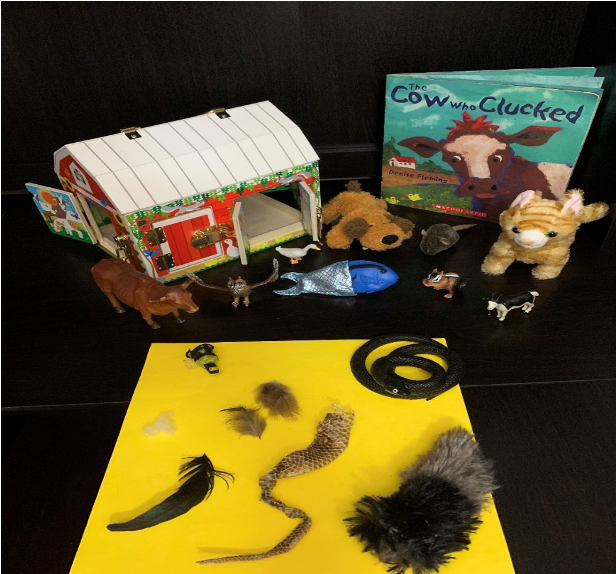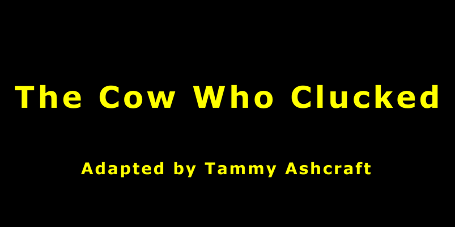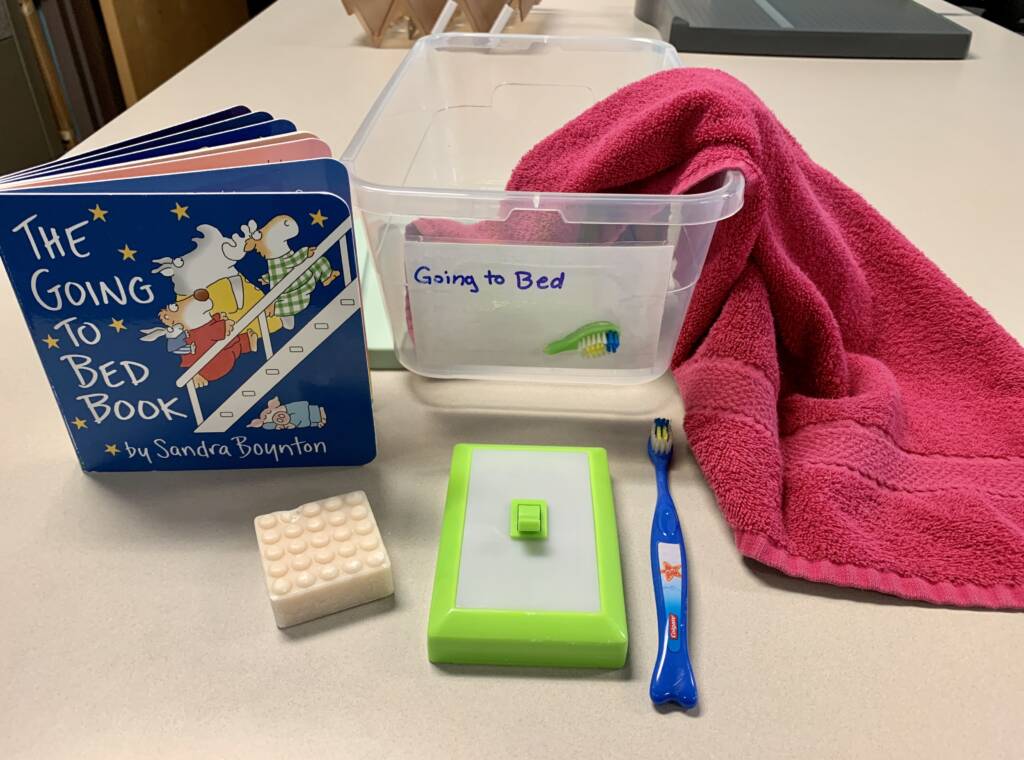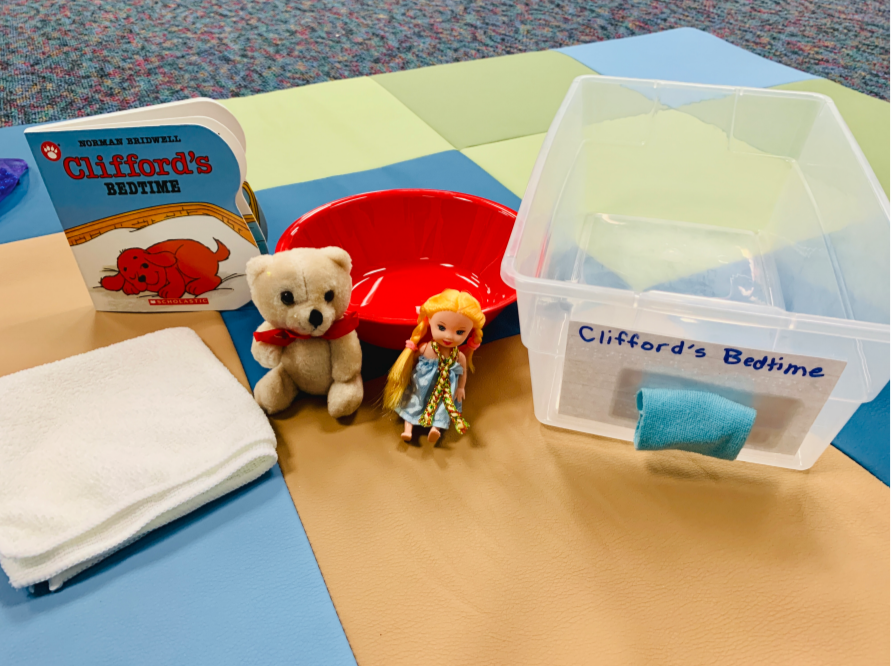As part of the graduate coursework for Visual Impairments and Multiple Disabilities in the Teacher Preparation Program in Visual Impairments at the University of Kentucky, students were asked to complete four projects: a Story Box with at least 10 objects that correspond to the story, picture communication symbols and tactile communication symbols designed to go along with the story, and a talking book to go along with the story or represent concepts from the story.
We are sharing them on Paths to Literacy and hope that others will use them!
Included in this post are ideas for a story box, picture symbols, tactile symbols and a talking book which are adapted for the children’s book The Cow Who Clucked by Denise Fleming. I would recommend this book for younger students, including those with disabilities and/or visual impairments. These ideas are meant to introduce and expand on concept development and depth of learning around farm animals. The Cow Who Clucked builds real connections by providing students with experiences of the sounds produced by each of the animals. The book also consists of repetition and sequencing, which is a crucial part of early literacy skills.
Story Box
Object used (additional tactile objects needed):
- Velvet cow figurine
- Dog plush
- Bee made from mesh and styrofoam
- Fuzzy cat
- Fish with scales attached
- Duck figurine (real feather from taxidermist)
- Goat figurine (white brush tip)
- Mouse (cat toy)
- Textured snake toy (real snake skin)
- Squirrel figurine (squirrel tail)
- Owl figurine (real feather)
- Hen (real hen tail feather)
The objects used in this story box are the animals within the book as well as including additional textures for animals that are plastic. I got the plastic figurines from various sources, but unfortunately it was difficult to find very many that feel like the real animal. This issue is a deficit for our students who are blind or visually impaired. Therefore, I felt the additional tactual objects were needed to give the student necessary experiences for real-life connections.
The item I chose to hold the materials was a brightly colored barn with various latches to encourage fine motor strengthing and hand-eye coordination. The inside doors actually have pictures of some animals too, which could be used later on in concept development. The story box objects will be used in a sequence throughout the book as Cow meets every animal. When reading each page, the student will put Cow next to the animal presented on the page. We will make the sound for that particular animal then put it in the barn and proceed to the next animal. After the story, the objects can be used to retell the story and assess the student on animal sounds. The story box objects can also be used to match to the communication picture symbols or tactile symbols.
Picture Communication Symbols
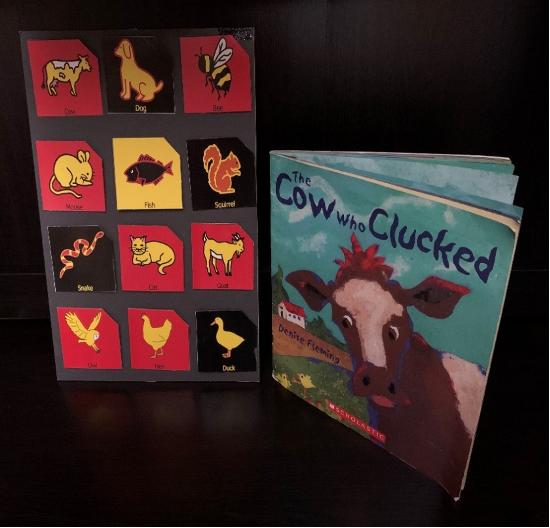
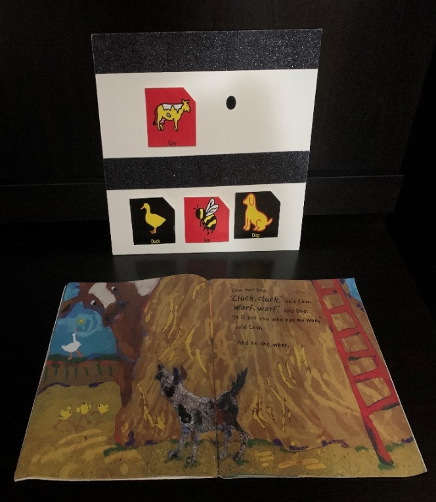
The symbols utilized were created using Boardmaker and adapted for a student with CVI who has a visual preference for the color yellow. The symbols chosen correspond to the animals found throughout the book using contrasting colors. These particular symbols are expected to be visually appealing in order to encourage tracking for this particular student and increase participation within the activity.
As shown in picture 2, the communication symbols can provide 2-3 choices for the student and reduce clutter from the whole board. The symbols can be used in closed-ended questioning to assess the student’s knowledge of sequence and recall of the book. If the student has poor fine motor skills, a felt board or all in one board could easily be used instead.
Questions that can be asked:
- What animal did Cow meet first/last? (with simplified options)
- What animal do you predict Cow will meet next in the story? (with simplified options/ 2-3 choices)
- Which animal did Cow actually meet next?
- Show me the animal that makes this sound (moo, bark, buzz, etc.).
- Tons of questions about specific categories of animals or features- Example: Which animal can fly? Which animal has 0, 2 or 4 legs?
- Put animals in order that Cow met throughout the book.
Tactile Communication Symbols
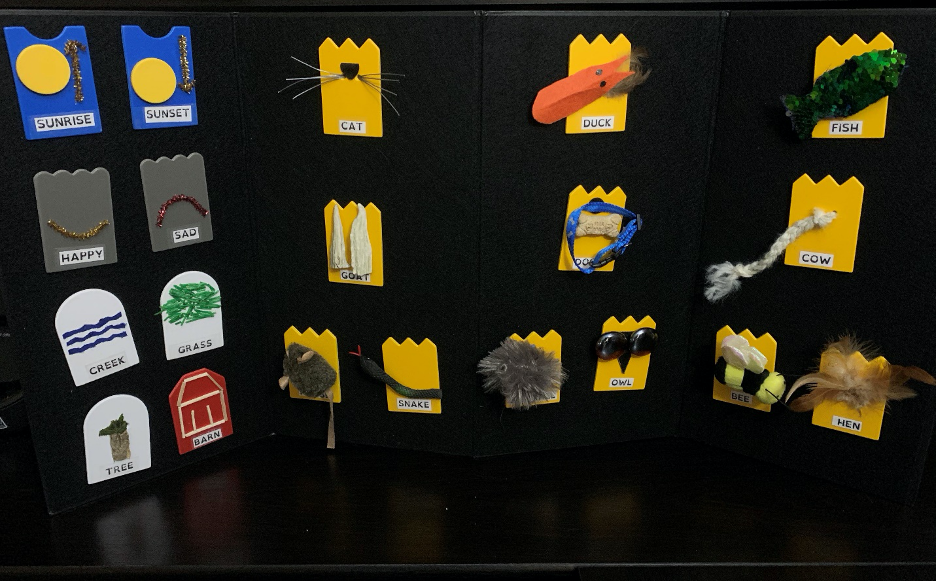
The symbols created are:
- Cow (cow tail made from fur yarn)
- Dog (bone and dog collar)
- Bee (soft toy bee with crinkle wings)
- Cat (whiskers made from broom)
- Fish (cut up sequin pillow)
- Duck (duck beak from felt & real duck feathers)
- Goat (deer horns)
- Mouse (cat toy)
- Snake (toy snake w/ snakeskin texture)
- Squirrel (fake squirrel tail)
- Owl (eyes made from glass gems & beak from leather)
- Hen (chicken feathers)
Additional symbols for this story: happy, sad, grass, go, barn, creek, tree, sunrise, sunset
Most of the symbols are used to represent the animals within the book. The fringe vocabulary supports the student to focus on the specific topic of farm animals. The student will need to develop awareness of the tactile from first hand experiences of each object and shape recognition of part-whole. In addition to this, having basic background knowledge of the animal sounds is beneficial but not essential. As the student gains knowledge of this topic and has a clear understanding of the part-whole relationship of each animal, more tactile symbols relative to core vocabulary and sentence building can be added.
The tactile communication symbols will be used in a sequence throughout the book as Cow meets every animal. There are 2 ideas of ways to utilize these symbols while reading the book. 1) The tactile symbols should be arranged in the order corresponding with each page of the book. While reading a page, the student will put Cow next to the animal presented on the board and make the sound for that particular animal. As the student advances to more complex sentences, we will include what cow is doing on the page; i.e. when Cow goes to the barn, rests under a tree, walks by a creek and eats grass. 2) After the story, the tactile symbols can then be used for retelling. As the TVI and student retells the story, the student will select the correct tactile symbol to place on the desk or all in one board. The student can also be assessed by matching tactile symbols to animals and/or animal sounds. You can also allow the student to make up their own story about farm animals. Be creative; there are so many ways to build concept development and literacy skills using the tactile symbols.
Talking Book
I created this talking book and adapted it from the story, The Cow Who Clucked by Denise Fleming. The focus audience for this book is younger students who are blind or have CVI to expand their knowledge of farm animals. I chose to modify and use simple boardmaker pictures of animals using colors red, yellow and black for contrast. The print is enlarged in yellow font and spaced on a black background. In addition to this, I recorded and inserted audio on each page to provide students access to independently utilize this book. Also included in the audio are recorded sounds of real animals to support the readers learning and build real connections.

